Word 2016 -
Using Find and Replace

Word 2016
Using Find and Replace


/en/word2016/formatting-text/content/
When you're working with longer documents, it can be difficult and time consuming to locate a specific word or phrase. Word can automatically search your document using the Find feature, and it allows you to quickly change words or phrases using Replace.
Optional: Download our practice document.
Watch the video below to learn more about using Find and Replace.
In our example, we've written an academic paper and will use the Find command to locate all instances of a particular word.
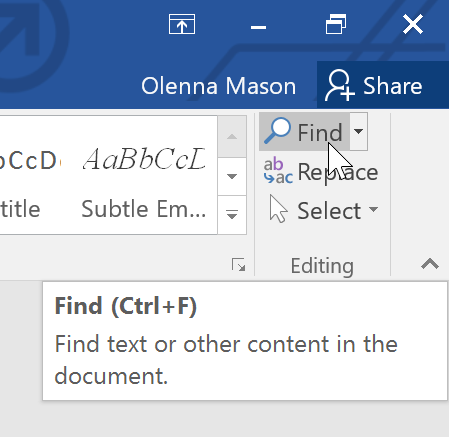
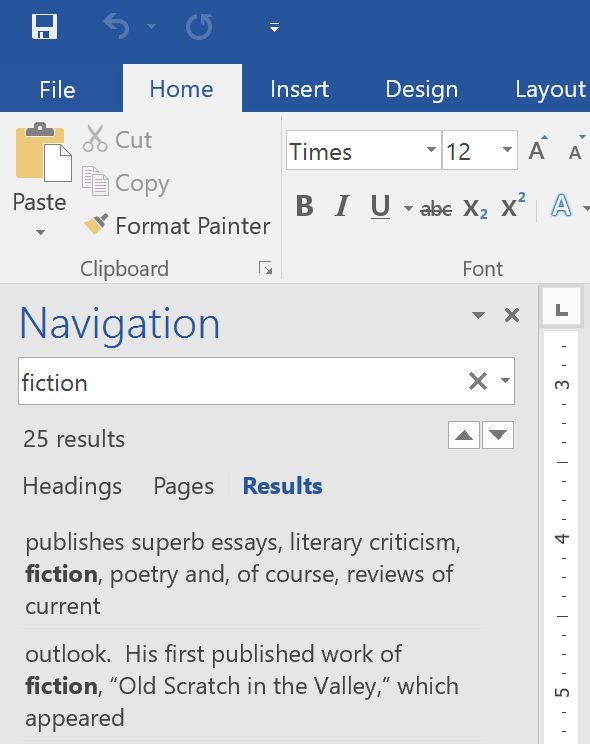
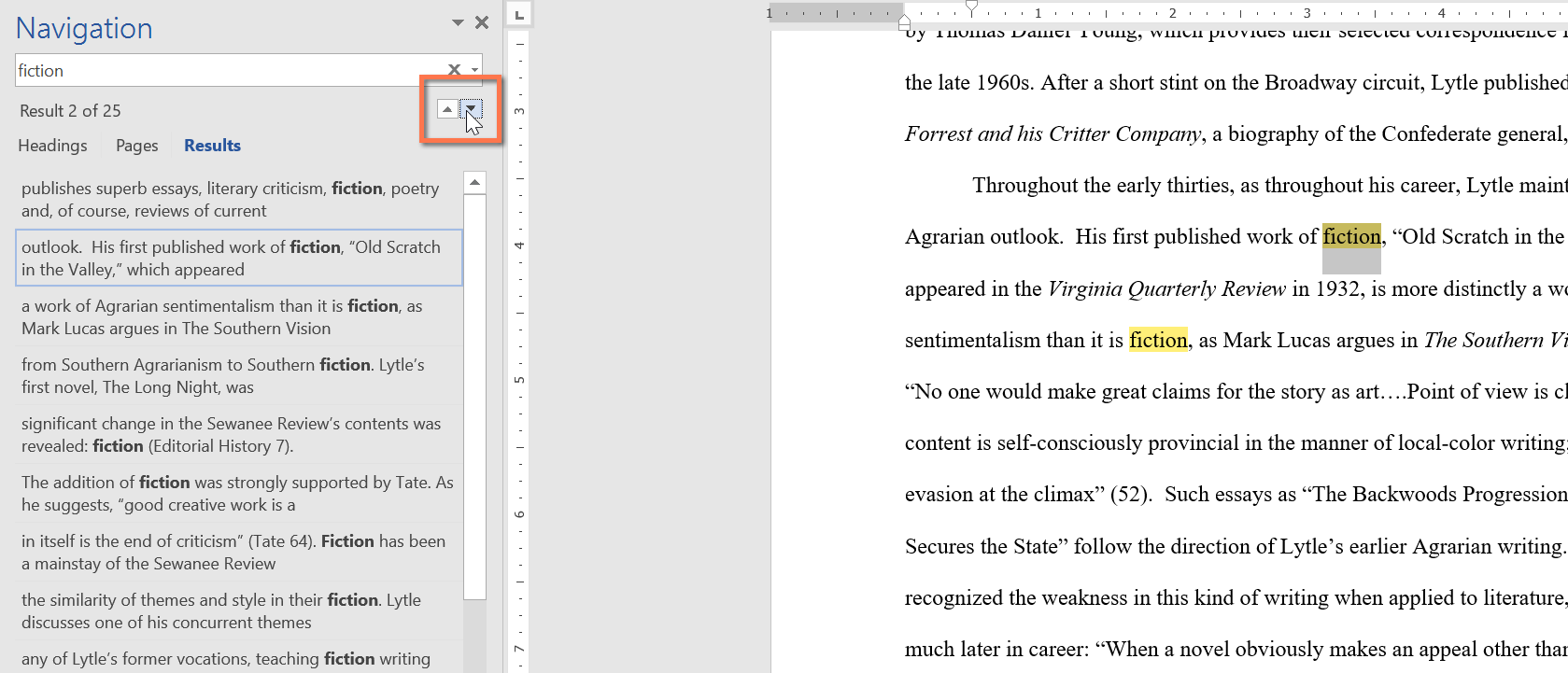
When you are finished, click the X to close the navigation pane. The highlight will disappear.
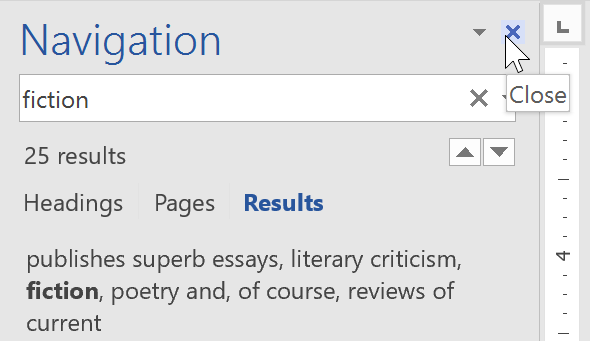
For more search options, click the drop-down arrow next to the search field.
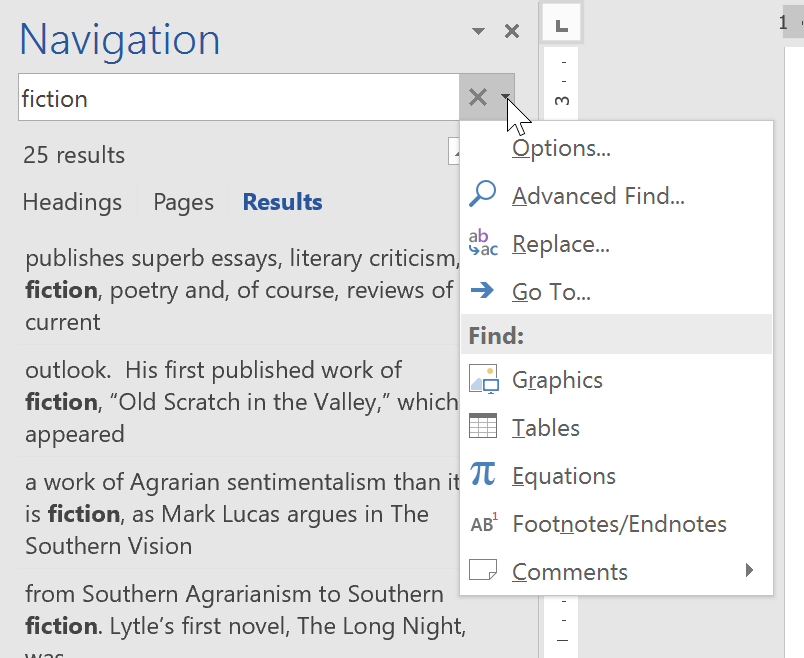
At times, you may discover that you've made a mistake repeatedly throughout your document—such as misspelling a person's name—or that you need to exchange a particular word or phrase for another. You can use Word's Find and Replace feature to quickly make revisions. In our example, we'll use Find and Replace to change the title of a magazine so it is abbreviated.
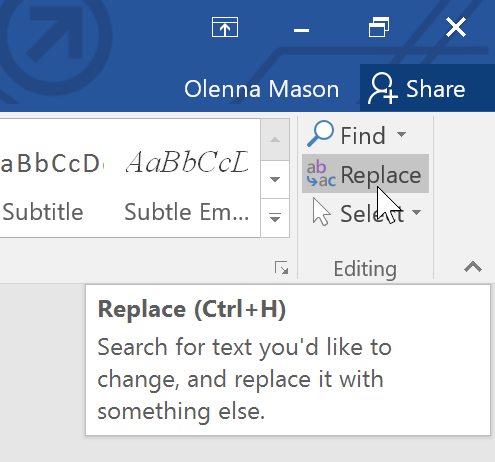
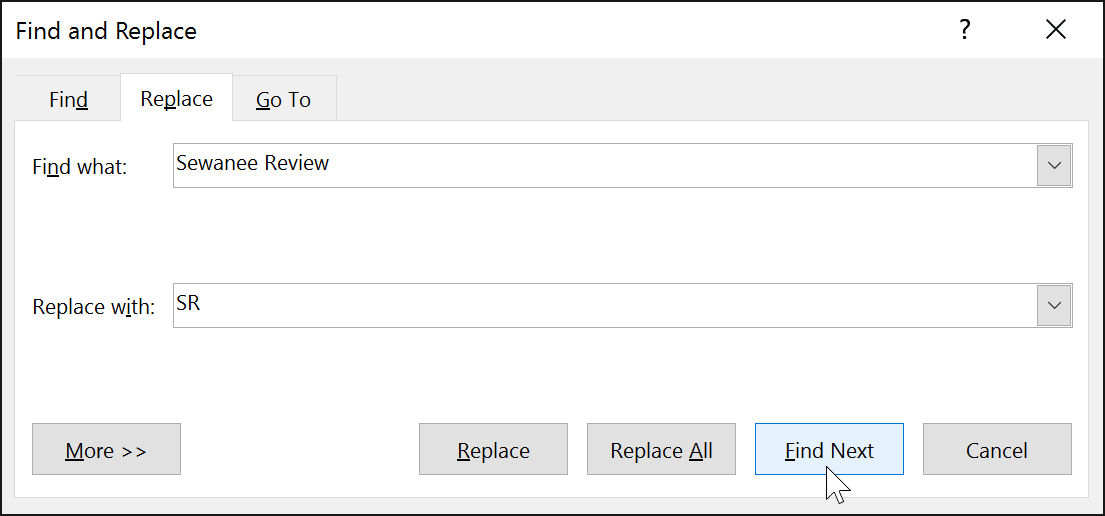
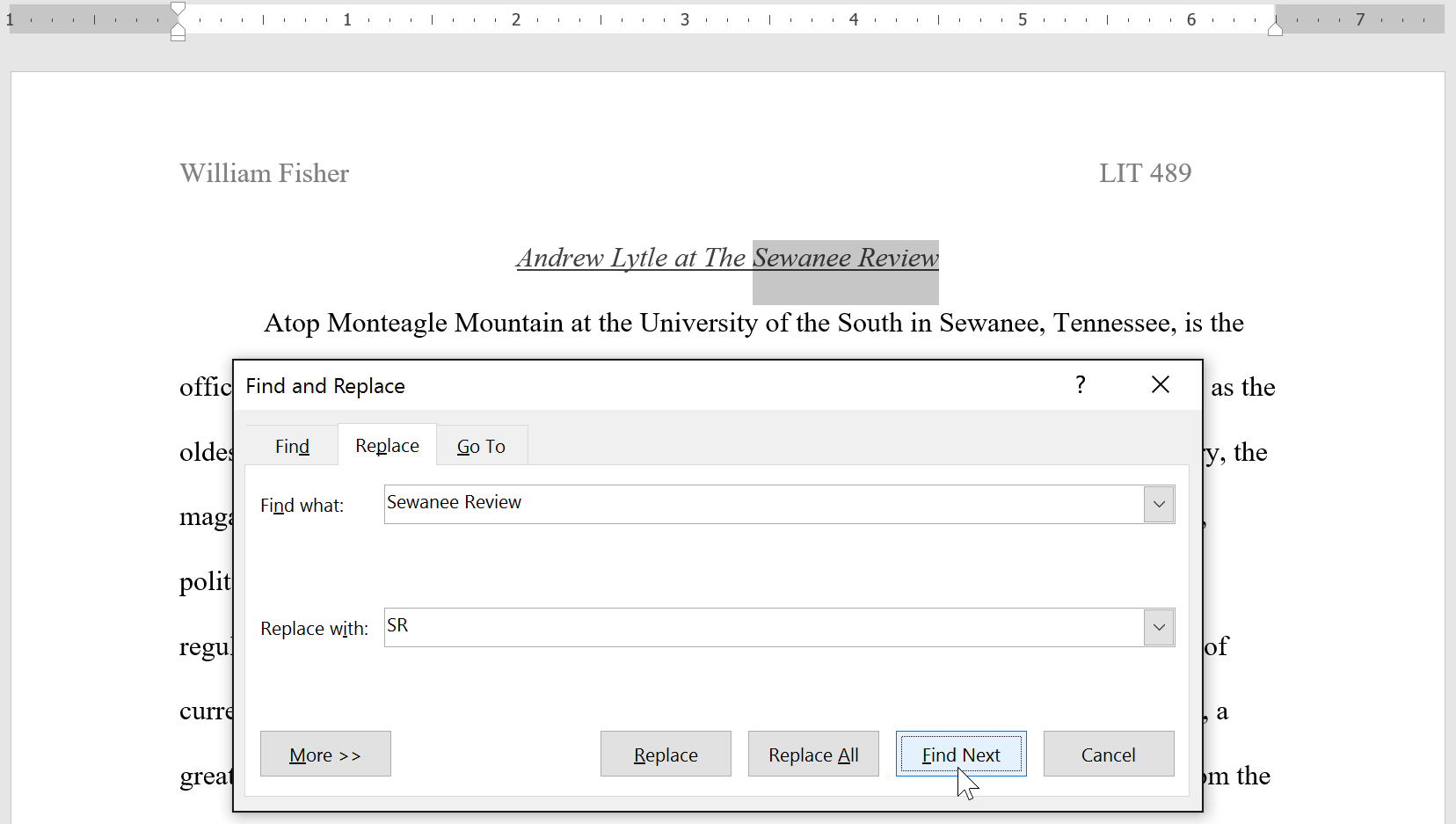
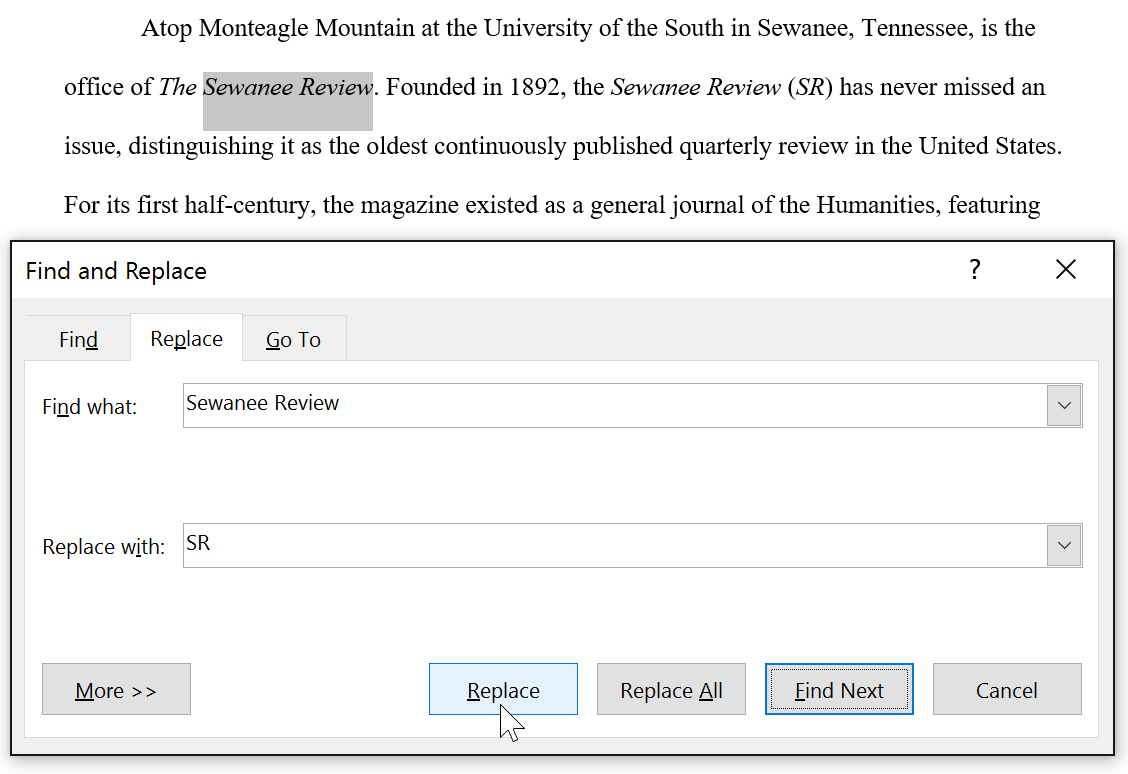
The text will be replaced.

When you're done, click Close or Cancel to close the dialog box.
For more search options, click More in the Find and Replace dialog box. From here, you can select additional search options, such as matching case and ignoring punctuation.
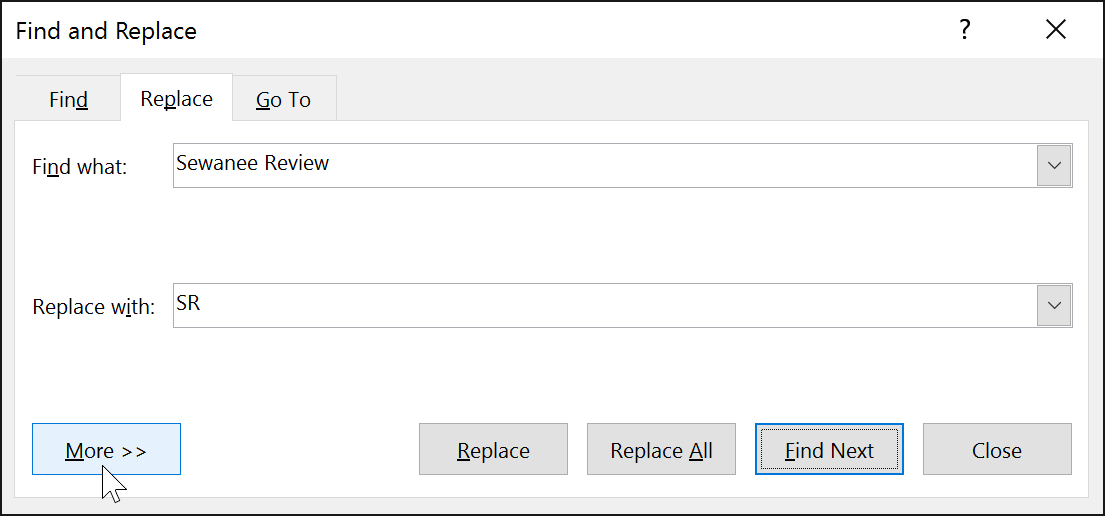
When it comes to using Replace All, it's important to remember that it could find matches you didn't anticipate and that you might not actually want to change. You should only use this option if you're absolutely sure it won't replace anything you didn't intend it to.
/en/word2016/indents-and-tabs/content/